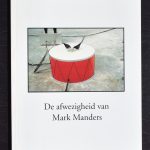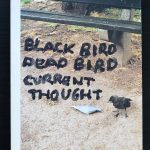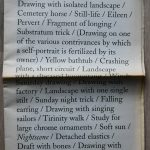
The following text comes from the Wouter van Riessen site:
For as long as I can remember, I have been intrigued by self-portraits. What is a self-portrait? A portrait of yourself. But what is that really: a self? Many things come to mind. My particular interest is in the self as a collection of inner voices and moods; in who you are beyond the data that defines your identity. In recent paintings and photographs, I explore the role that the imagination plays in this through art that touches me. From the poems of Baudelaire and the sunflower paintings of Van Gogh, new images arise. They reflect my inner world and are, in this respect, self-portraits.
I like to work with puppets. A puppet is brought to life by the gaze of the person looking at it. Your imagination allows a puppet to return your gaze, and establish a connection. As you look more closely, the puppet becomes increasingly alive, and the intangible relationships between matter and spirit and the inner world versus the outer world rise to the surface. Many of my paintings depict puppeteers. The self-portrait then springs from the relationship between the puppets and the puppet master. One of my paintings shows a man who, with apparent resignation, allows his face to be measured up by two Mr Punch puppets. One holds a ruler up in front of the man’s right eye. This can be read as a (self) critique of the omnipresent tendency to view everything from the perspective of measurable data. This way of looking at things pushes questions that refer to meaning into the background. I believe that visual art plays a crucial role, reaching beyond the bounds of data to recall the elusiveness of reality.

Several years ago, I began researching the power of the imagination based on the three versions of Fifteen Sunflowers in a Vase painted by Vincent van Gogh in 1888 and 1889. The poses and expressions of Van Gogh’s sunflowers have an almost human quality. Yet, when looked at individually, they are sometimes barely recognisable as flowers. In which sense, they are ideal prompts for associative games. When I started to copy Van Gogh’s flowers, I continually saw new things: a jellyfish floating gently upwards; twin sisters with their cheeks pressed together; the head of a bat. The expression of the bouquet as a whole is also quite fascinating; in the version I know best – the one in the Van Gogh Museum – I see a mixture of shock and surprise. That Fifteen Sunflowers in a Vase is such a familiar image is, I feel, a great advantage: it means that everyone can see the origin of my flowers and will be inspired to bring my bouquets to life as well.
For me, the work of the nineteenth-century poet Charles Baudelaire has the power to evoke intimate memories and atmospheres; uncommon feelings of love and transience, connection, and abandonment. To give form to such moods, I use props from childhood: marionettes. Just like Baudelaire’s poems, marionettes are charged with symbolic meaning and are able to convey deep emotions. I buy wooden puppets on the Internet, and rework them with a chisel, sandpaper and acrylic paste until they look just as I want. Then I stage them in tableaux, which I photograph. My images often diverge considerably from what Baudelaire expresses in his poems; my emphasis differs from his. I identify with the characters in another way. In one of the prose poems (Les Veuves), he describes a widow’s son as impetuous, selfish, devoid of gentleness and patience. I saw the child quite differently: stricken by fate, conjoined to his mother. Taking this image as my starting point, I then worked towards a photographic work. I step into the world of Baudelaire and look around freely.
www.ftn-books.com has several van Riessen items available:


 Pascali has become a legend over the last decade or so. He counts many admirers and many consider his art timeless and as contemporary as his present ” brothers in arms”.
Pascali has become a legend over the last decade or so. He counts many admirers and many consider his art timeless and as contemporary as his present ” brothers in arms”.





























































